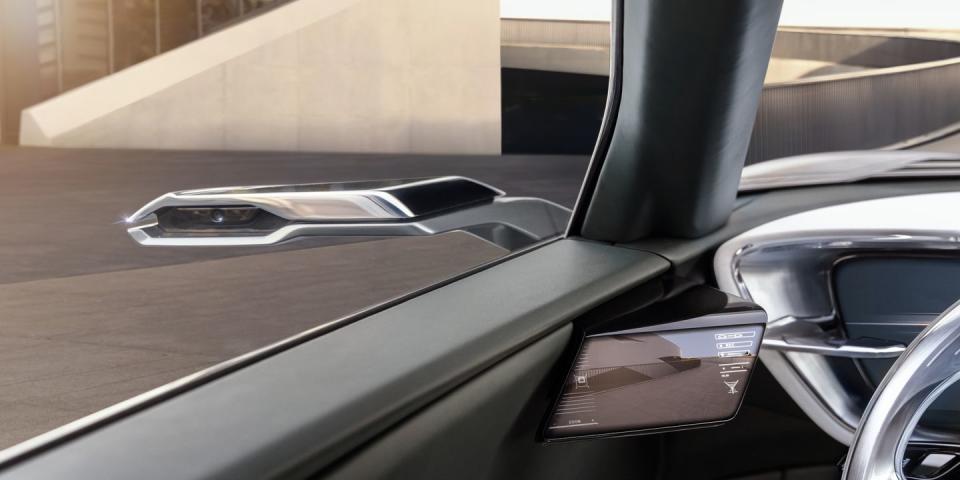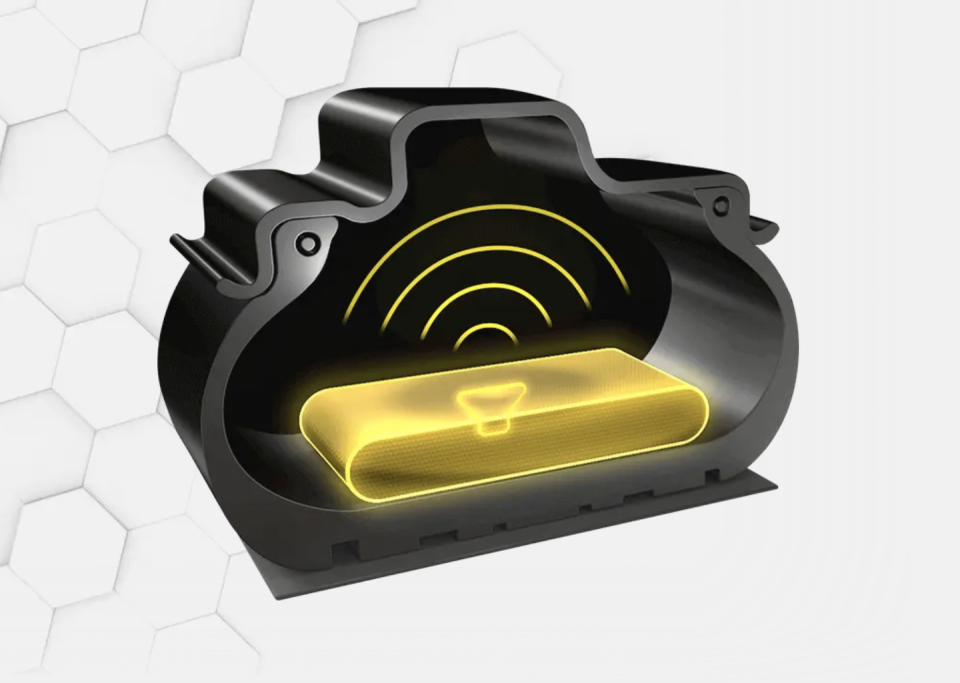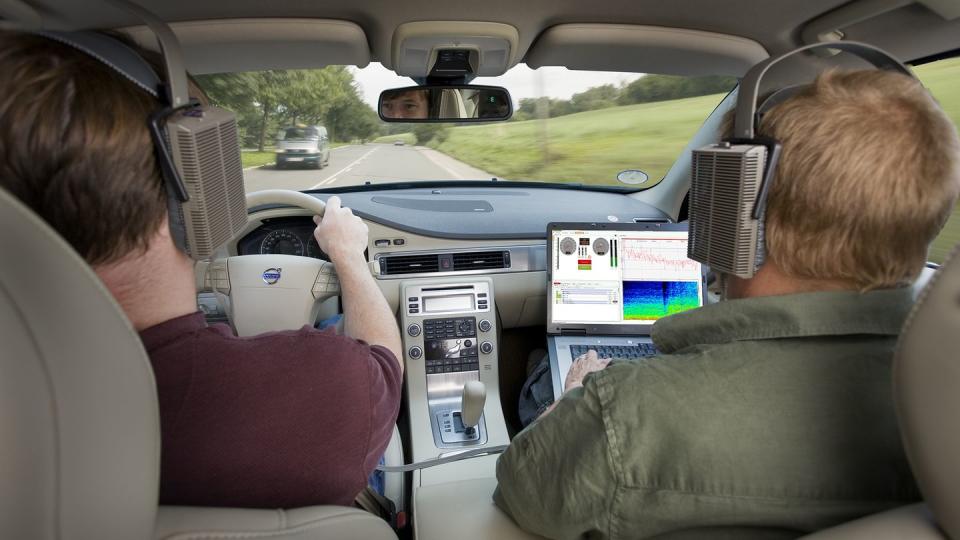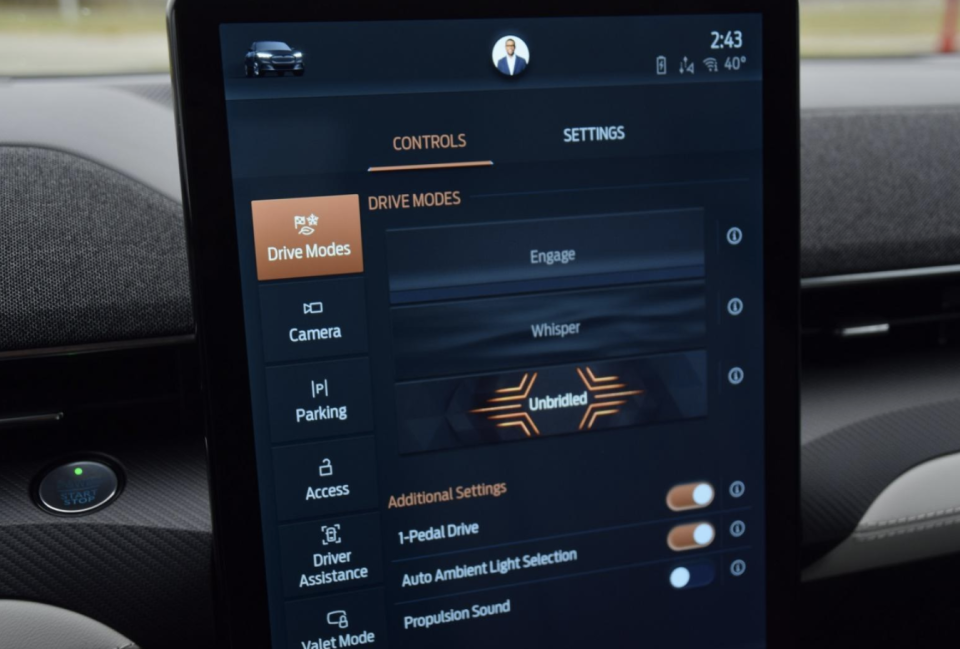EVs Run in Near Silence, So Cabin Noise Faces More Scrutiny

At this week's AutoTech: Detroit 2022 conference, panelists address a nagging question: How is Electrification Changing the NVH Playing Field?
Germany-based VI-grade has developed NVH simulators that let vehicle developers experience noise levels through virtual prototypes.
Camera-based systems to replace sideview mirrors (such as on Buick Wildcat concept above) could lessen wind noise inside the cabin.
Electric vehicles pose a series of new challenges for automotive designers and engineers—well beyond the need to eke out every ounce of energy from a large battery pack hidden under the floor.
Without an internal-combustion engine creating a four-stroke soundtrack of spinning belts, pistons pumping, exhaust tones, and (often) forced induction, there isn’t much of an auditory experience for vehicle occupants. In the age of EVs, it boils down to wind noise, road noise, and whatever tunes are playing on the stereo.
This new dynamic is bound to make drivers and passengers much more aware of every sound in the cockpit, which is sure to be reflected in customer satisfaction surveys. Every buzz, squeak, and rattle is much more noticeable as noise, vibration, and harshness.
“The masking noise is going down significantly, when you’re going from an ICE to an electric car,” Brent Dreher, manager of NVH and durability at Faraday Future, says on a panel session at this week’s AutoTech: Detroit 2022 conference hosted by WardsAuto and Informa.
At Faraday Future, one of Dreher’s jobs is to “cascade” vehicle targets with regard to noise levels down to component suppliers. The California-based automaker recently said it has 401 preorders for its FF 91 ultra-luxury EV—a car that, if produced, must be as quiet inside as a bank vault.
As EV shoppers become more demanding, Dreher says he won’t be surprised if the industry adopts new sound-level requirements for windows, seats, mirrors, and other moving parts that could create untoward clatter in the cabin.
“Suddenly, that seat adjustment motor that you wouldn’t hear before is now making loud noise,” Dreher says. “Another example is the air-conditioning compressor. That used to be an accessory on the engine—you’d never really hear it. But now the AC compressor is a separate unit mounted somewhere on the car with its own electric motor. You certainly don’t want to hear that clicking on and off.”

Dreher says Faraday Future has experimented extensively with Pirelli’s noise-canceling tires, which integrates a thick layer of polyurethane foam glued inside the tire along the tread line. “And that makes a very perceptible difference in the subjective road noises for the passengers of the vehicle,” he says.
Fans can be particularly problematic, not only blowing warm or cool air into the cabin but also housed within cooled seats, where the fan can be annoyingly loud on a hot day. Without a combustion engine drowning out the sound of a fan, automakers might consider using modern fans to break the silence. “Maybe you don’t want it super quiet,” Dreher says. “Maybe you want it (blowing fans) as a little masking noise and the customer will never notice.”
Automotive supplier Auria is positioning itself as a one-stop shop for foam and insulating materials to block and absorb interior noise, especially in EVs. “If you lower the window, you don’t want to hear that squeaky sound,” says panelist Jian Pan, Auria’s senior director of engineering. “If you move your seat, you don’t want to hear the motor whining.”

A company based in Germany, VI-grade, has developed an entire suite of NVH simulators that lets vehicle designers and engineers experience noise levels through virtual prototypes, even before a physical model has been built. Jeff Hodgkins, the company’s senior NVH application engineer who worked for Toyota for more than 15 years in this field, points to sideview mirrors as troublesome because they project from the body and create aerodynamic turbulence.
“It creates a lot of wind noise, and it’s right at the driver’s ear,” Hodgkins says on the panel. “I’ve seen some really cool designs now with vehicles integrating all these cameras,” in place of mirrors. “That will cut down drastically a lot of the main wind noise sources right there at the B-pillar.”
Of course, vehicle prototypes have been developed without sideview mirrors for more than 20 years, and yet production remains elusive, partly because images gathered by outward facing cameras have to be projected somewhere for the driver to see. How many screens is it safe for a driver to view while piloting two tons of metal?
How about laminated glass, which is extending now from windshields to side windows? While it shields certain noise at the front of the cabin, laminated glass makes it more likely you’ll hear more wind noise from the back of the vehicle, particularly in a pickup truck with an all-electric powertrain.
“You need spatial balance. We fought that all the time at Toyota,” Hodgkins says, referring to noise that became more noticeable if special acoustic glass was used on the vehicle. “Sometimes we would opt to get rid of that acoustic glass just to try to keep that (sound balance) front to rear.”
It’s possible for automakers to integrate specific sounds within electric vehicles. Hodgkins says there’s a growing number of audio engineering companies developing banks of sounds that are then presented to automakers for specific vehicle programs. Automakers can closely analyze the various sounds to see which best fit a vehicle’s brand character.
“And then they’ll have juried studies—they will bring in outside customers, people inside the company, people to sit down and listen to these sounds and actually ask, ‘Which ones do you like better, what kind of feelings do you get from this?’” Hodgkins says. “What’s interesting is, customer A and customer B may have different perceptions, so do you really want to limit the customer from not buying this car because of a decision you had to make on that sound?”

Maybe electric vehicles, such as the Ford Mustang Mach-E with its button-activated V8-sound projector, will offer an array of sounds that drivers can select, based on mood.
Panel moderator Rose Ryntz would like to see a time when car dealerships have headphones or sealed booths where customers can experience what one electric vehicle sounds like versus another.
“I think it definitely could be a sales point—provide a little more a la carte for the buyers,” Hodgkins says. “You’re going to get this vehicle and this is what it sounds like.”
As you drive the latest electric vehicles, how do they sound to you? Are they quiet in a good way, or not so much? Please comment below.

 Yahoo Autos
Yahoo Autos 